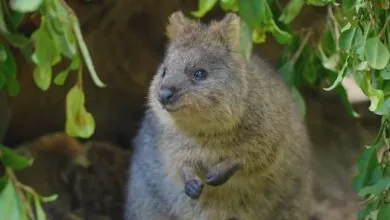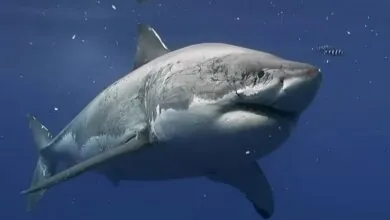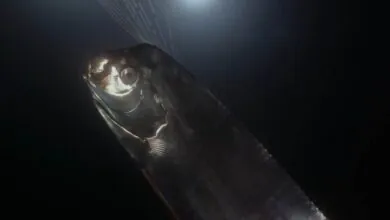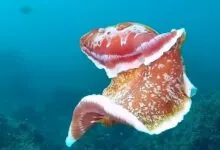Orca Whale Size: Don’t Judge a Book (or Ocean Mammal) by Its Cover
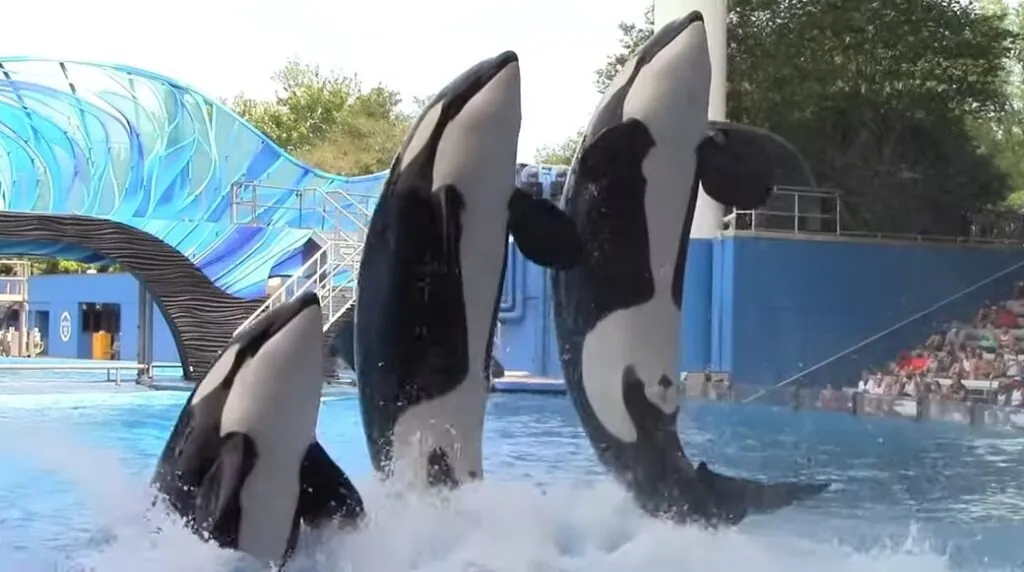
The Orca whale, commonly recognized as the killer whale, reigns as an apex predator within the stretched oceanic realm. These enthralling whales inspire curiosity with their intelligence, intricate social structures and, of course, their remarkable size. In this piece of construct, we shall unfold orca whale size in particular and its remarkable adaptations, sophisticated hunting strategies and complex family dynamics in general. Let’s roll!
| Kingdom | Phylum | Class | Order | Genus | Family | Scientific Name |
| Animalia | Chordata | Mammalia | Artiodactyla | Delphinidae | Delphinidae | Orcinus |
Orca Whale Size
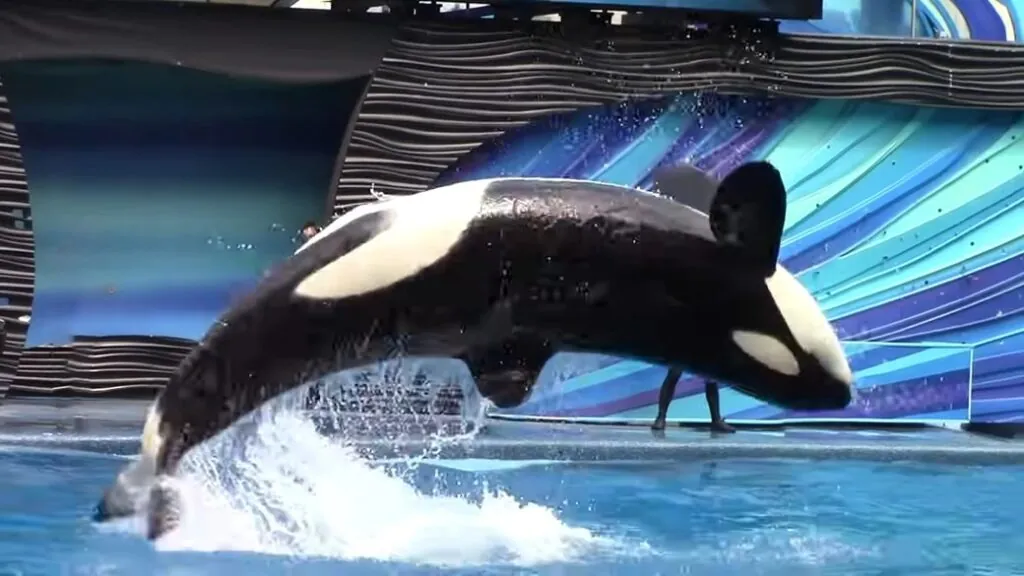
There’re plenty of factors that make conspicuous orca whale size. Larger orcas can consume more prey, potentially influencing population dynamics and overall ecosystem stability. It’s their size that can influence diving capabilities and energy expenditure. It affects how orcas utilize different habitats and their movement patterns across vast oceanic regions.
Orca Whale Size Variation
Male orca whales are significantly larger than females, with males averaging 6 to 8 meters and 5.5 tons while females average 5 to 7 meters and 3 to 4 tones. Size can differ across ecotypes, with Antarctic Type A males reaching 9.2 meters – the largest orcas. Throughout their lives, orcas feature continuous growth; males reach peak size around 25 years and females around 15 years.
Size Comparisons with Other Marine Mammals
Orca whales are the largest dolphins, dwarfing even Bottlenose dolphins (3 to 4 meters). Though not the largest marine mammal, orcas – scientifically known as orcinus – are comparable in size to some apex predators like great white sharks (4 to 8 meters) and hammerhead shark (4 meters). Orcas possess superior agility and hunting prowess albeit they’re smaller than whales like blue whales (30 meters) and sperm whales (18 meters).
Size-Related Adaptations
Speaking of the adaptations related to the orca whale size, their streamlined bodies minimize drag, letting efficient swimming and bursts of speed for hunting. Their large, muscular tails push them forward through the water with stunning force. A thick blubber layer insulates them for cold water environments and provides energy reserves. In addition, orca whale’s jaws and sharp teeth are adapted for tearing flesh and consuming diverse prey.
Methods of Measuring Orca Whale Size
There’re three method to measure orca whale size. Direct method involves anesthetizing animals, but raises ethical concerns. The second one is photogrammetry which involves analysis to calculate body length and girth. Certain genes may correlate with body size, providing non-invasive insights.
Origin and Evolution
Evolutionary History
In terms of the orca whale evolution, its ancestry can be traced back 50 million years to ancient land mammals pertaining to hippos and camels. Around 23 to 5.3 million years back in time, their ancestors stemmed from other dolphins.
As per fossil evidence like the Pliocene-era Orcinus citonensis, there occurred gradual size increase and adaptations to hunting larger prey. The development of echolocation – powerful tails for propulsion and thick blubber for insulation – is among the key evolutionary events.
Genetic Composition and Diversity
Orca whales are classified under the Delphinidae family alongside dolphins and porpoises. The orca whale’s genetic analysis unpack distinct ecotypes with unparalleled adaptations. Antarctic Type A orcas are the largest dolphins at 9.2 meters, while resident pods in temperate waters are smaller.
Environmental Adaptations
In conjunction with orca whale adaptations, particularly the environmental ones, they’re apex predators, with ecotypes specializing in fish, mammals or other whales. Their dedicated teeth manifest adaptations to different prey. Type A orcas have large, conical teeth for tearing flesh; resident orcas, on the flip side, have smaller, peg-like teeth for fish.
With respect of the orca whale behavior – the social one, intricate social structures assist orcas to cooperate in hunting and raising young. Resident pods have matriarchal societies with stable family groups while transient pods have more flexible social structures. Their thick blubber insulates them in cold water and powerful tails and streamlined bodies enable efficient swimming and hunting.
Distribution and Population
Geographic Range
As for as the orca whale’s distribution is concerned, they’re cosmopolitan, located in all oceans, from the frigid Arctic to the tropical waters near the equator. They thrive in diverse habitats, including coastal waters, open oceans and inland seas. Highest densities take place in Northeast Atlantic around Norway, North Pacific near Alaska and the Aleutian Islands and the Southern Ocean off Antarctica.
Population Dynamics
The orca whale population is approximated at 50,000, but estimates vary due to challenges in counting widely dispersed individuals. In some regions, expressly Southern Resident population in the Pacific Northwest (73 individuals in 2023).
Geography
| Continents | All continents except Antarctica |
| Countries | Any country with coastline bordering an ocean except Antarctica |
| Bio-geographical Realms | Marine |
| Biome | Oceanic |
| Climate Zones | Temperate, Subtropical, Tropical, Polar |
Habitat
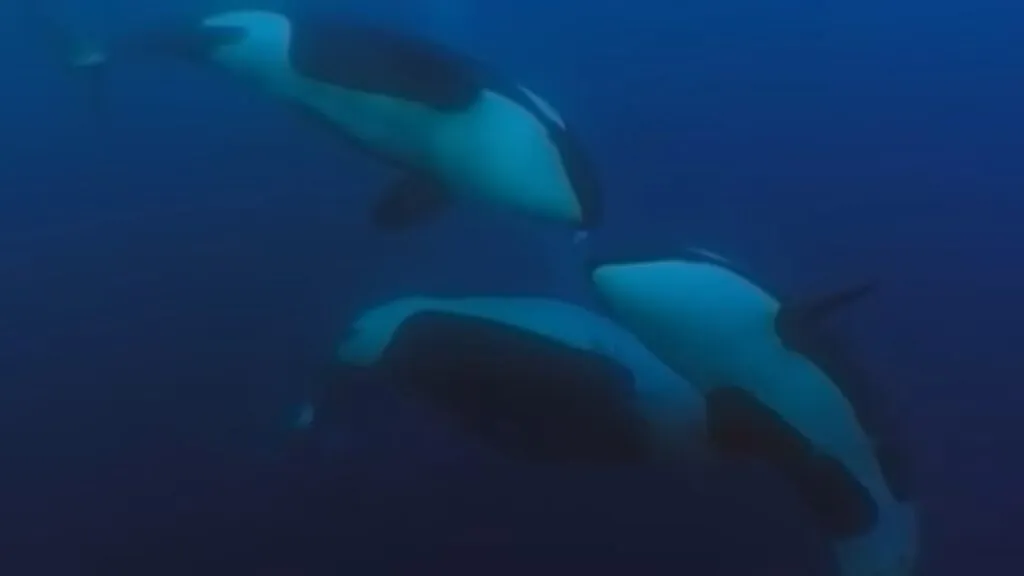
The orca whale size may steal the spotlight, but their habitat holds equally fascinating secrets. Let’s delve into the intricate world they inhabit:
Habitat Preferences
Speaking of the orca whale habitat, they thrive in a plethora of marine environments – from frigid Arctic waters to tropical coral reefs. Many prioritize coastal zones near continental shelves and islands, offering access to diverse prey and sheltered areas for calves. Some ecotypes, like Type A orcas, roam vast expanses of the open ocean.
On top of that, the specific microhabitats they thrive in include kelp forests, ice edges and shallow bays and estuaries. Tracking prey accessibility and ice patterns, some killer whales follow predictable seasonal movements.
5 Orca Whale Facts
Appearance
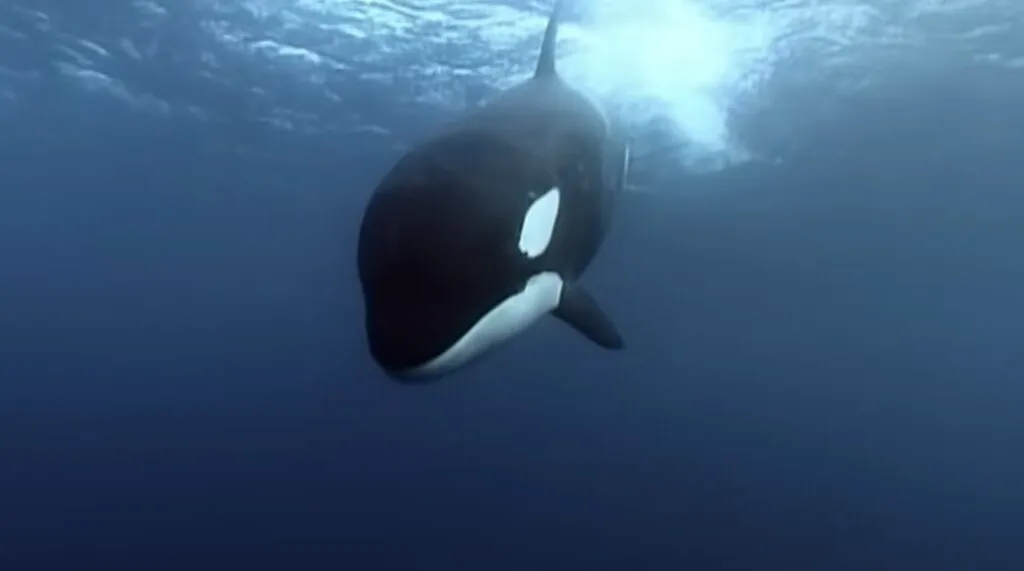
Physical Characteristics
Sexual Dimorphism
In terms of orca whale size, males are 20-40% larger than females, having more robust bodies and larger fins. Concerning the coloration, they’ve similar overall pattern, but some suggest males have more black on the dorsal surface. Males reach sexual maturity later, around 25 years, relative to females at 15 years.
Orca Whale Anatomy
| Color(s) | Black and white with a gray saddle patch behind the dorsal fin |
| Tongue | Smooth and white, used for tasting and manipulating prey |
| Mouth | Wide, with strong lips for grasping and manipulating prey |
| Jaw | Powerful, consisting of two halves connected by a flexible joint |
| Teeth | 40-50 large, conical teeth |
| Nose | Nostrils located above the head, forming a single blowhole |
| Skeleton | Consisting of dense bones, flexible cartilage and a large skull |
Reproduction and Life Cycles
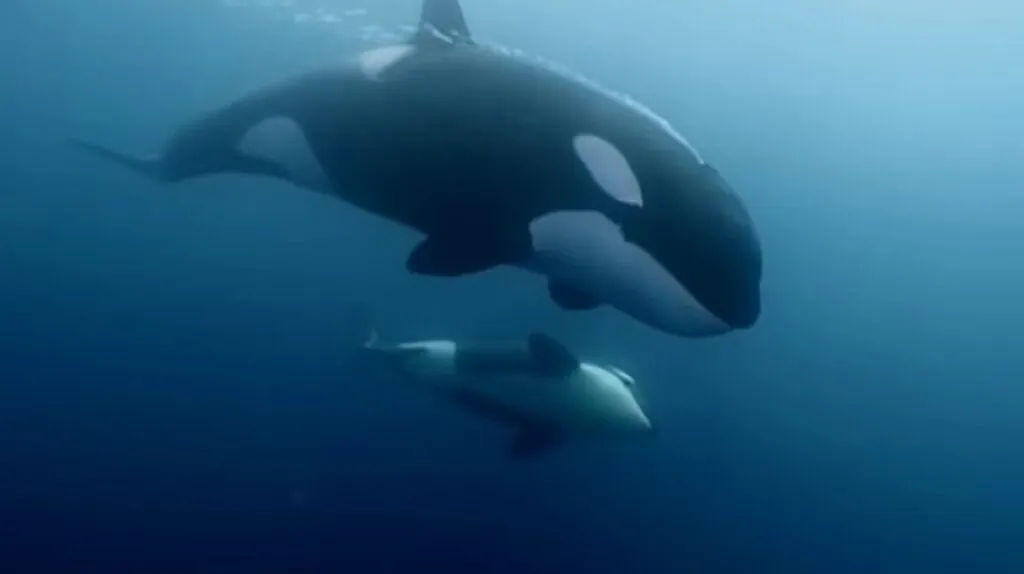
Although the mesmerizing orca whale size might take center stage, its reproduction harbors equally enchanting secrets.
Mating System
In terms of the orca whale’s mating system, they’re not rigidly monogamous. They feature polygyny – one male, multiple females – in transient pods and polyandry – one female, multiple males – in resident pods. Alliances and partnerships form and dissolve.
Reproductive Biology
The orca whale’s breeding season differs geographically, but typically peaks in spring and summer in temperate waters.
Gestation Period
The gestations period of killer whales is the longest among marine mammals at 15 to 18 months. It allows advanced brain development in calves. Females normally give birth every 5 to 10 years. Parental care is maintained chiefly by mothers who nurse calves for 1 to 2 years.
Life Cycle Stages
Lifespan
Female orca whale’s lifespan is 50 years in average, with some reaching 80 to 90 years. On the flip side, males enjoy the lifespan of merely 20 to 30 years due to competition and higher stress levels.
Mating Habits
| Mating Behavior | Promiscuous |
| Reproduction Season | Varies by population, but generally summer months |
| Litter Size | Usually one calf, occasionally twins |
| Gestation Period | 15-18 months |
| Baby Carrying | Mother carries the calf for up to 6 years |
| Independent Age | Around 6-10 years, but remain closely associated with their pod |
Diet and Lifestyle
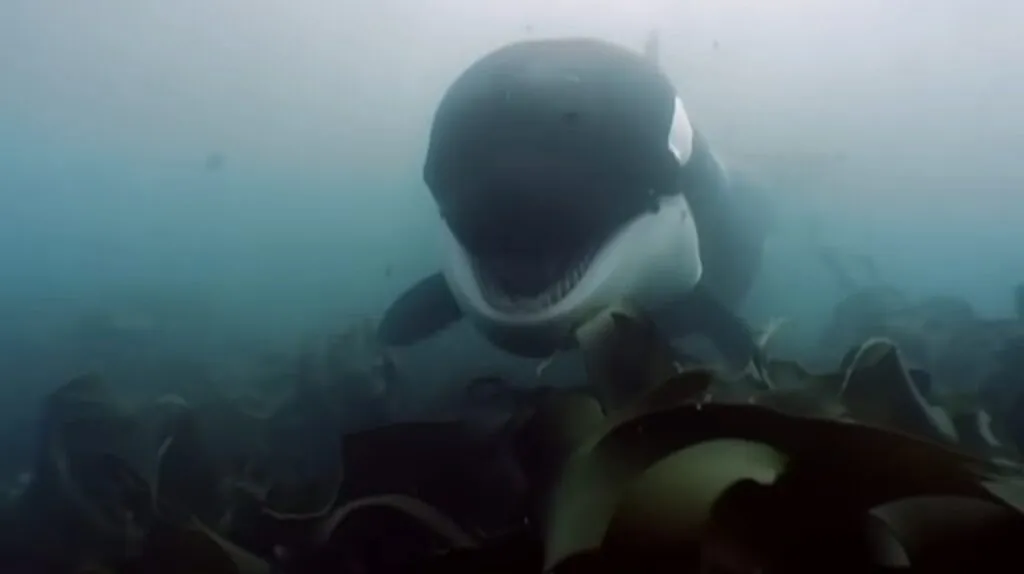
Despite the alluring the orca whale size stealing the show, its diet remains a treasure trove of equally fascinating secrets.
Feeding Ecology
These apex predators are secondary consumers, occupying the top of the food chain. The orca whale’s diet varies by ecotype, with specialists preying on fish, mammals or even other whales.
Resident pods predominantly consume fish, exclusively salmon, but also eat squid, octopus and marine mammals. Transient pods target marine mammals like seals, sea lions, dolphins and large whales like blue whales.
Foraging Strategies
Orca whales deploy precise clicks and whistles to pinpoint prey. They share information on prey location and coordinate hunting strategies. Pods join forces to herd, isolate and capture prey.
Diurnal Activity Patterns
The orca whale is primarily diurnal – active during daylight hours. Their activity patterns can be adjusted built upon prey movements and environmental conditions.
Social Structure
Their living in complex pods with strong family bonds makes their social structure prominent. With respect to resident pods, matriarchal societies are led by older females, with pods generally numbering 5 to 30 individuals. Transient pods sport more flexible social structures, with smaller groups of 2 to 10 individuals and frequent changes in composition.
Threats and Conservation
Conservation Status
While estimated at around 50,000 individuals, this figure is difficult to verify due to their stretched distribution. Concerning the orca whale conservation status, the species is listed as Data Deficient by the IUCN Red List of Threatened Species.
The Southern resident population (Pacific Northwest) has been categorized as Endangered under the U.S. Endangered Species Act (ESA) and Canada’s Species at Risk Act (SARA). Merely 73 individuals remain in this population as of 2023.
The Northern resident population (Pacific Northwest) has be typified as Threatened under the ESA. Their population is around 350 individuals, yet threats like prey depletion and habitat degradation exist.
Transient population and Antarctic Type A orcas are not listed under ESA or SARA but encounter potential threats like climate change and bycatch in fisheries.
Conservation Initiatives
Agreement on the Conservation of Cetaceans in the Black Sea, Mediterranean Sea and Contiguous Atlantic Area (ACCOBAMS) underscores research and conservation efforts for cetaceans, including Orcas, in the Black Sea and Mediterranean regions.
Convention on the Conservation of Migratory Species of Wild Animals (CMS) has several memorandums of understanding dedicated to specific orca populations, such as the MoU for the Conservation of Cetaceans in the Southern Hemisphere and the MoU for the Conservation of Migratory Sharks.
Though the International Whaling Commission (IWC) chiefly focused on whale hunting regulations, it also addresses threats to orcas and other cetaceans. For more insights about Orca Whales and their conservation status, you can visit the website of the National Oceanic and Atmospheric Administration (NOAA).
Relationship with Humans
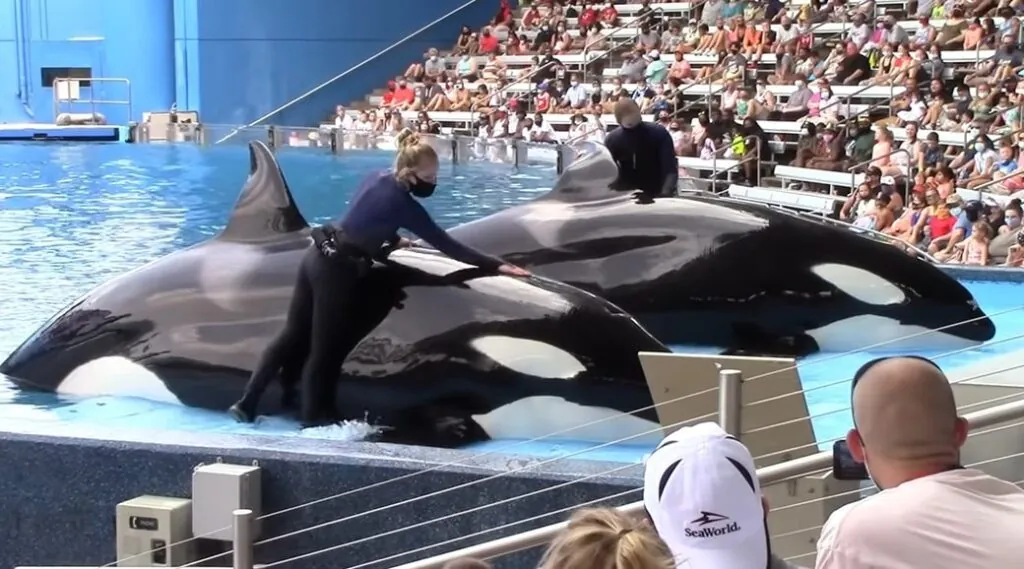
Though orca whale size may command attention, their relationship with humans harbors a wealth of enthralling secrets, waiting to be revealed.
Cultural Significance and Symbolism
Orca whales are presented as powerful shamans, protectors and guides from the Tlingit and Haida of the Pacific Northwest to the Nuu-chah-nulth of Vancouver Island. In some Coast Salish stories, the mischievous Skywalkeror Raven takes the form of an orca, using his cunning abilities to play tricks on humans and other animals.
In Norse mythology, the mythical Hafgufa – a monstrous sea creature with the head of a horse and the body of a whale – may have been inspired by real-life encounters with orcas.
Media and Entertainment
In the realm of art, these species have made their conspicuous presence in multiple genres:
Literature
Documentaries
Movies
Economic Importance
In Pacific Northwest, orca-based whale watching generates and approximated $1 billion annually, supporting 2,100 jobs and contributing $426.9 million in job income within Washington State alone.
In Iceland, whale watching, including orca sightings, is instrumental in €240 million to the Icelandic economy and supports 1,500 jobs. In New Zealand, orca encounters are a conspicuous draw for tourists, generating NZ$200 million annually and creating 1,200 jobs.
In conjunction with the orca whale research, The National Oceanic and Atmospheric Administration (NOAA) Fisheries spends $10-15 million annually on Orca. It supports scientists, technicians and research vessels.
Unique Characteristics
Forge a path through an intriguing journey as we unfold fascinating facts about orca whales – truly captivating animals that start with O. Join us in shedding light on their remarkable rundown!
| Common Name | Orca |
| Other Name(s) | Killer whale, Sea wolf |
| Number of Species | 1 |
| Population Size | Estimated 50,000 – 80,000 |
| Lifespan | Females: 50-80 years, Males: 30-50 years |
| Weight | Females: 5,000 – 10,000 kg, Males: 6,000 – 8,000 kg |
| Length | Females: 5 – 8 meters, Males: 6 – 9 meters |
| Top Speed | 56 km/h |
| Predators | Humans (primary threat), Sharks (rarely) |
| Prey | Fish, seals, sea lions, dolphins, whales |
| Most Distinctive Feature | Black and white coloration, large dorsal fin |
FAQs
